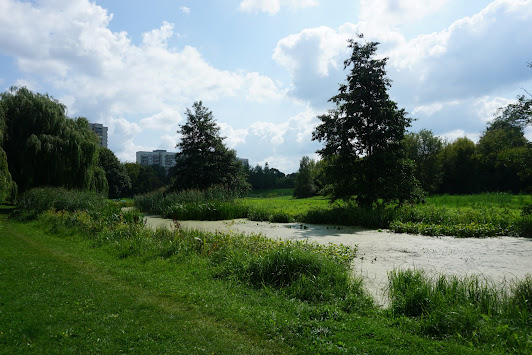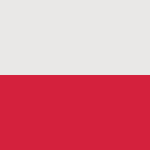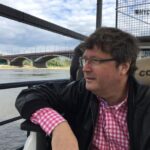Metro Stadion Narodowy
#Warsaw tour guide #Warsaw city guide # guided tour in warsaw #Warszawa tour guide #Warszawa city guide #guided tour in Warszawa
With Stadion Narodowy (National Stadium) we have crossed the river and are now in a “different” Warsaw. The atmosphere is more relaxed here, a little less ‘glitzy’ than on the other side, but it’s Warsaw and that’s an important part of getting to know the city.
A stroll along Grochowska Street will give you a good impression of the area, perhaps with a few detours down side streets. And then, of course, there are the sights I mention below.

Warszawa Wschodnia – Eastern Railway Station. Address ul. Kijowska 20, but also access from ul. Lubelska. Approx. 10 minutes from Metro Stadion Narodowe.

There used to be tunnels like this at all Polish railway stations, with banana vendors and fiddlers and all – a bit of the atmosphere still exists at the Eastern railway station
Warsaw has three major railway stations – Centralna in the centre of the city, the Western Railway Station, which is currently being modernised and completely renovated, and the Eastern Railway Station, where you can still revel in the communist architecture.
The railway station was originally built in 1866, but was destroyed during WWII. The new railway station was completed in 1969 and, with its interesting geometric shapes, was considered a monumental example of modernist railway construction at the time. However, cheap solutions were used during construction and the railway station quickly fell into disrepair. Partially renovated 2012.

The lake with small shoreline gardens funded by private capital
Here we are on the other side of the river, in the Praga district, which has a completely different vibe to the centre of Warsaw. At the beginning of the 20th century, it was a meadow where livestock grazed. Today, the park is considered one of Warsaw’s most beautiful parks, with large lakes – an English-style parkland spread over 58 hectares.
The garden has been beautifully restored, partly in co-operation with the German Embassy and private investors who created the Polish-German Garden. The large lake includes a small harbour and the possibility to rent a pleasure craft to sail on the lake.

Here, several Polish kings were elected by the Polish nobility. This is how it was done in Poland after the Jagiello dynasty died out in 1572
On the other side is the electoral common. From 1573 to 1764, Polish kings were freely elected by the Polish nobility as a whole. Part of the park is a large open area called Kamienkowski Electoral Common (Kamionkowskie Błonia Elekcyjne), where two Polish royal elections were held, including the last Polish king, Stanislav August Poniatowski, who was probably primarily elected under pressure from Russian soldiers.

The Corpus Christi Church (Parafia Bożego Ciała) co-cathedral. Address ul. Grochowska 365. Approx. 200 meters from Metro Stadion Narodowe. Right next to the old Wedel chocolate factory.
Perhaps my personal favourite church in Warsaw. It is a beautiful modernist church from 1931 that survived WWII. It seems functional and not as bombastic as many other large Catholic churches. If nothing else, it’s worth a visit to find out how churches can be built in an alternative way.
Wedel Chocolate Factory

Gable painting, factory building and customs shed converted into a chocolate shop. On the opposite side of the street you can see another customs stall
The old chocolate factory was founded way back in 1851 and today has a network of cafés in all major Polish cities where you can stuff yourself with solid and liquid chocolate. It is considered by many to be a Polish national treasure, but since 2010 it has been owned by a Japanese-Korean group. In an old customs shed in front of the factory, there is now a chocolate shop.
Kamionek
The area is called Kamionek and both Wedel, the church and the park can be accessed from Grochowska Street. The Eastern Railway Station is also just a few minutes’ walk away. But – Grochowska Street is rather long and it will take you quite some time to get to the end. This is Praga, the working-class neighbourhood known for its desolation and crime.
Now, however, the metro has arrived and everything has been spruced up, although the decay can still be seen in the side streets. But if you walk or take the tram out of Grochowska Street, you will slowly leave the Warsaw you think you know. From an international metropolis, you enter a provincial town, which in some places still seems very dilapidated. But it’s still Warsaw, and perhaps worth a look if you’re curious.
Mińska Street
Shortly after the chocolate factory, you can turn left (opposite the park) onto Mińska Street, and while you’re here, I’d almost consider it mandatory. Here you get a taste of the dilapidated Praga, which is now being refurbished. It’s also become quite fashionable here, as you’ll quickly realise.
Soho Factory

Eat well in Soho
Soho Factory is an urban regeneration project where an old industrial area and railway yard has been transformed into housing, offices, shops, theatre, high-end restaurants and low-cost cafés, cooking school, exhibitions, fashion shows and much more.

Old factory buildings get a new lease of life

There’s also a theatre

… and cosy relaxation bars
You can feel the creativity the moment you enter the area, which can be accessed from 25 Mińska Street or Żupnicza Street from the opposite side.

Neon Museum – It can be a little hard to find, but if there’s a will, there’s a way
The area is also home to the privately owned Neon Museum, which houses a collection of 200 distinctive neon signs and illuminated adverts from the post-WWII era. During World War II, neon was a worldwide phenomenon, but perhaps especially so in the Eastern Bloc. It’s kind of secluded, but if you look for it, you’ll find it. Address: Mińska 25 (Soho Factory). Open every day during daylight hours.
SWPS

Higher School of Social Psychology – if you’re ambitious and mum and dad have a bit of money to spare.
Shortly after Soho Factory, you can turn right onto Chodakowsa Street, where after a few hundred metres you will find one of the few internationally recognised Polish universities, SWPS (Higher School of Social Psychology), which is fully capable of competing in par with the best state universities.
Stadion Narodowy

The national stadium in the national colours. Can be covered and used for various purposes. The circular road around the stadium is perfect for cycling or other forms of exercise when football is not being played. It’s also a great place to catch a glimpse of the high-rise constructions in the centre of Warsaw.
Poland’s large national stadium was built for the 2012 European Football Championship, which was jointly organised by Poland and Ukraine. The site of the national stadium used to be the site of a more dilapidated stadium, which used to be a huge outdoor market – a tourist attraction that has never really been re-established, although some of the market stalls have moved to the outskirts of the city.
The stadium has room for 60,000 seated spectators, including 800 people in 69 executive boxes. The building can be covered by a mobile roof structure and can be used for a variety of purposes. It contains some office space, but also hosts large concerts and during the COVID pandemic, the stadium was used as a makeshift hospital.
It is possible to visit the stadium on a guided tour – various themed tours from 15 to 29 zlotys.
Please send an email to m@hardenfelt.pl if you would like an English-speaking tour guide to show you the most important places in Warsaw.

